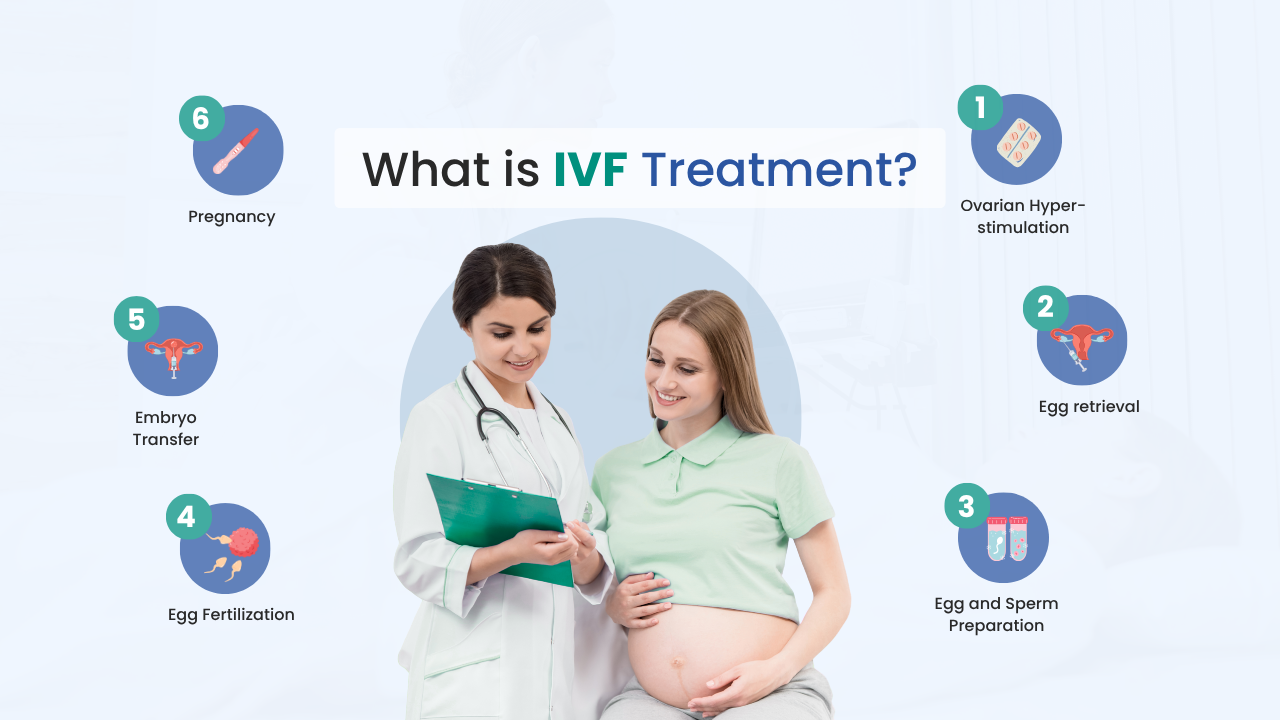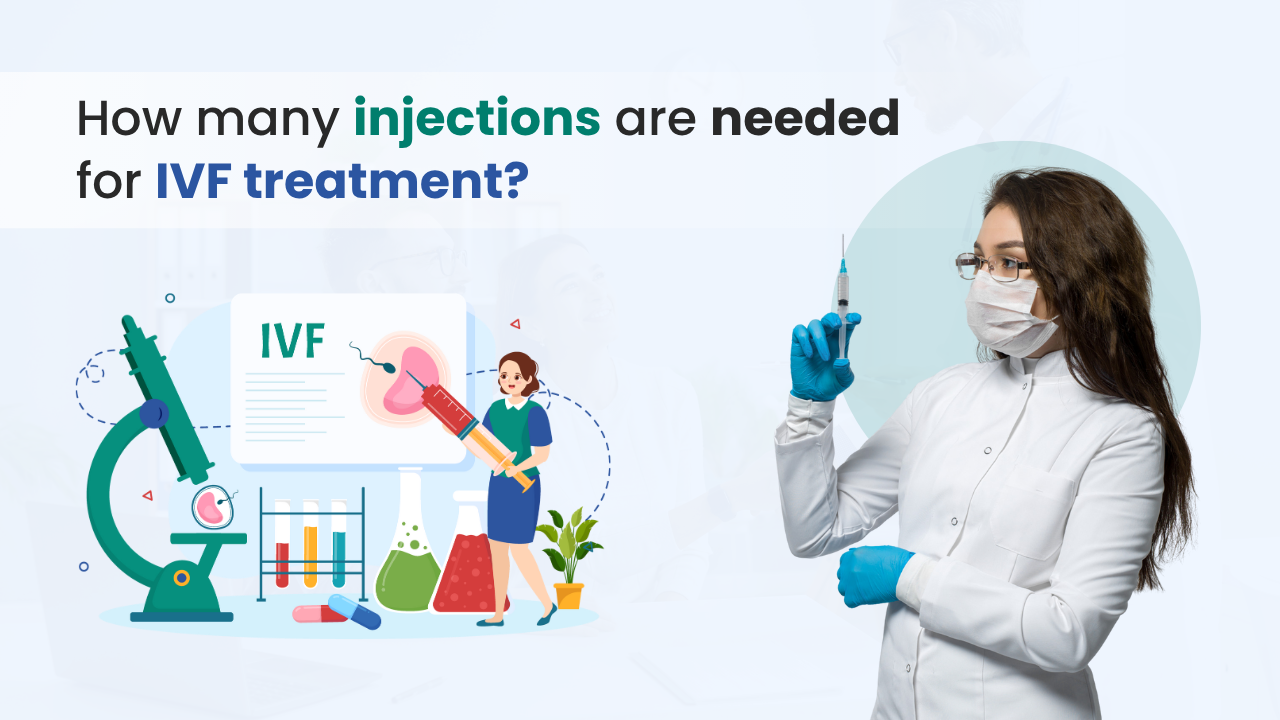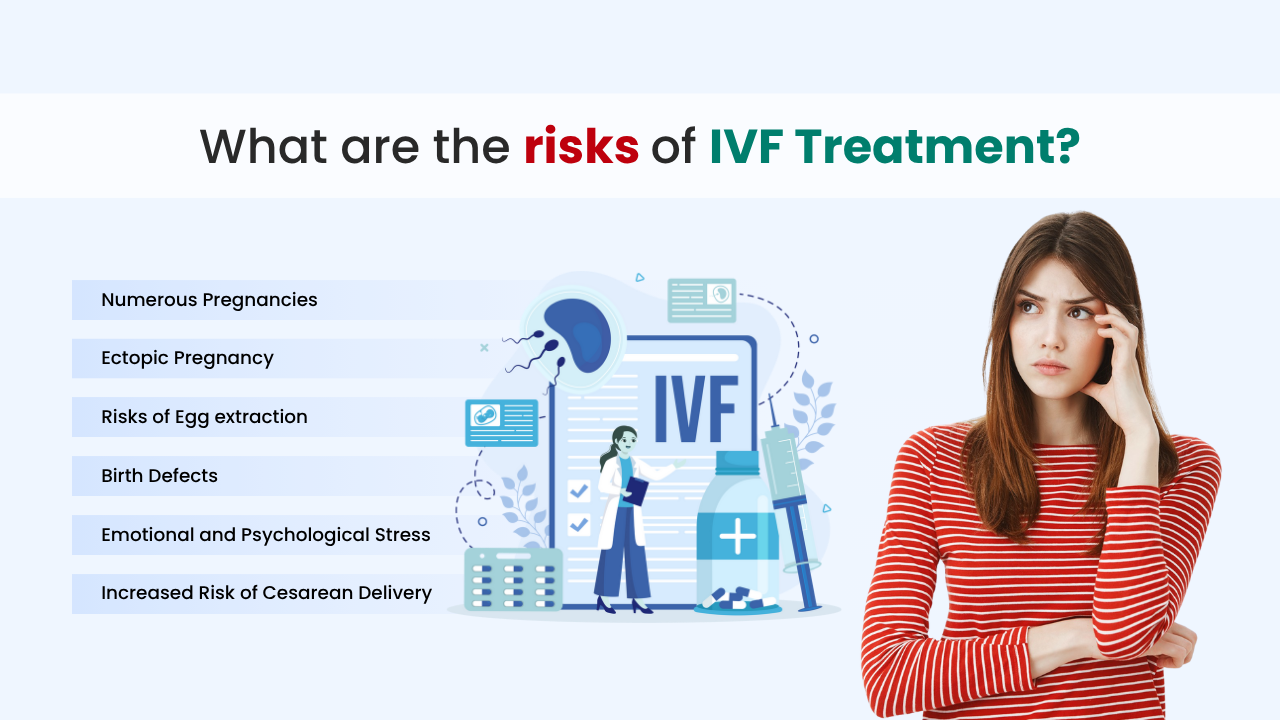Home Blogs IVF and Fertility How many injections for IVF Treatment?

The number of injections for IVF treatment typically ranges from 16 to 40 per cycle, but it depends on the patient’s response and treatment plan, which includes hormone shots for egg stimulation, a trigger shot for ovulation, and luteal support after embryo transfer.
IVF can seem challenging at first, especially when you think about how many needles will be involved in this procedure. Read this article and learn about the quantity of injections in IVF and other important details about the IVF procedure.
If you’re considering IVF, then it's important to understand every aspect related to this treatment, such as how many injections for IVF treatment are required. This guide will explain how many injections for IVF Treatment are needed in detail for better understanding.

In vitro fertilization (IVF) is a type of assisted reproductive technology that involves egg and sperm to preserved outside of the human body. However, it's a complex procedure that requires retrieving eggs from the ovaries and manually combining them with the sperm in a lab for fertilization.
One of the common questions couples ask is how many injections for IVF treatment are needed, and the answer depends on several stages of the IVF cycle. However, these injections are used for different reasons, like stimulating the ovaries to produce eggs, triggering ovulation at the correct moment, and also preparing the uterus to receive embryos.
With IVF, your choice of clinic or hospital can significantly impact success. For assistance in selecting the right institution, refer to our guide on the Best Hospitals for IVF and Fertility in India.

Patients often ask how many injections are required for IVF treatment, and the answer depends on the specific medical plan. However, IVF patients usually receive 16–40 injections or more per cycle, with some cases reaching up to 90. However, the exact number of injections varies. During ovarian stimulation, these injections, which are mostly hormones like FSH and LH, are given over 8–14 days. Injections of progesterone may also be administered for ten to fourteen days following embryo transplantation. The precise amount is determined by the particular IVF process and individual characteristics.
Success in IVF often comes from expert care and guidance. That's why we’ve compiled a list of the Best Doctors for IVF and Fertility in India, showcasing leading specialists dedicated to helping families grow.
During IVF, the ovaries are stimulated to create a number of eggs, which are then extracted, fertilized with sperm in a lab, and the resulting embryo or embryos are then placed into the uterus.
The uterus is where the developing infants are born after one or more of the fertilized eggs, sometimes referred to as embryos, are deposited. A typical IVF cycle lasts two to three weeks. Separating these operations into distinct parts could make the process take longer.
When it comes to managing sperm and eggs or embryos, in vitro fertilization is the most effective type of fertility treatment. Technology for assisted reproduction is the term used to describe this group of treatments.
There is a possibility of using a couple's sperm and eggs for IVF. Additionally, it could involve sperm, eggs, or embryos from an unidentified or recognized donor. An embryo implanted in the uterus is known as a gestational carrier, and they may be employed in certain situations.
Here are some major points why you should go for IVF treatment:

FAQs
If you’re wondering how many injections for IVF treatment are necessary, here’s what you need to know. The majority of patients typically have 1-2 injections each day for the duration of the ovarian stimulation phase, which lasts 8–14 days, plus extra injections to support the luteal phase and induce ovulation if needed.
The following are the 5 stages of IVF:
Around 16-90 injections are needed after embryo transfer, depending on the individual response.
Yes, few or no injections are required for In Vitro Fertilization (IVF). Techniques like Minimal Stimulation IVF and Natural Cycle IVF are used to accomplish this. Natural Cycle IVF employs a woman's natural egg during her monthly cycle, whereas Minimal Stimulation IVF stimulates egg production with smaller dosages of oral drugs or injectable hormones. These strategies seek to lessen the number of injections used and the IVF procedure's overall level of invasiveness.
Generally, injections are given for 8-14 days.
3-6 cycles are usually enough in IVF treatment.
Although there may be some slight pain and discomfort associated with IVF, the treatment is generally not thought to be extremely painful. Minor cramping, discomfort, or bloating is a common complaint, although it is frequently controllable with medicine or other pain management techniques.
Egg retrieval is known to be the most painful process in IVF.
The first few cycles have the Highest success rate.
Press the needle firmly through your skin while pinching it. Release the squeezed skin after inserting the needle all the way. Press the syringe: Press down on the syringe until all of the drug has been ejected. Take the needle out: Gently push on the injection site with gauze or a towel.
Some IVF procedures employ a "double trigger" strategy, which involves administering two distinct trigger shots to cause the final egg to mature. Human Chorionic Gonadotropin (HCG) is usually injected first, and then, approximately 36 hours later, a GnRH agonist. A spike in LH (luteinizing hormone) is caused by the GnRH agonist, and it is thought to aid in the latter stages of egg maturation.
The average cost of IVF treatment is 3500 USD in India.

Written By
A hard working, patient centred, skillful and knowledgeable doctor who is always ready to learn.
From a very young age she aspired to be in the medical field, to help cure the ailing. She believes that relief on the patient's face, the smile of gratitude and the feeling of helping someone is all what matters.
SOURCE
HISTORY
At Mejocare, we prioritize accuracy and reliability. Our content is based on peer-reviewed studies, academic research, and medical associations. We avoid tertiary references. Learn more in our editorial policy. Trustworthy health information for you.
https://www.mayoclinic.org/tests-procedures/in-vitro-fertilization/about/pac-20384716 para 1,2,3,4 https://www.artfertilityclinics.com/in/en/art-blog/how-many-injections-are-needed-for-ivf-treatment faq 2 https://health.clevelandclinic.org/what-to-know-about-giving-ivf-shots-at-home para 7
CURRENT VERSION
Our care team can help you.
